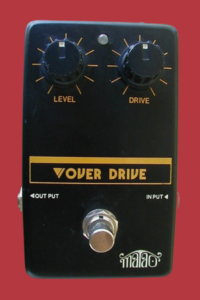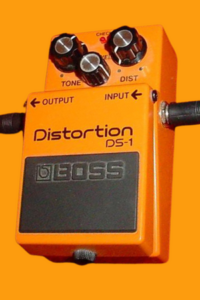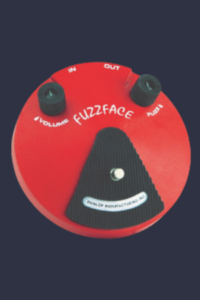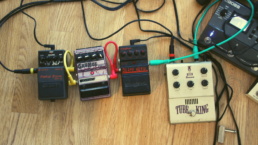Overdrive, Distortion, & Fuzz Effects Explained
When you are new to playing guitar, or even a few years into playing, and you’re learning about the effects your favorite guitarists use, the vast amount of options can be overwhelming. And, depending on the style you’re going for, some pedals will apply to you and not to others. Conversely, some effects are fairly ubiquitous across most genres. One of these effects is “distortion.” This term is quotes because of its broad definition, but generally refers to altering an audio signal by distorting it. In guitar pedal terminology, “overdrive,” distortion,” and “fuzz” are popular names for different types of distortion. In this blog, we’ll be discussing the differences between these effects, and how they’re most popularly used. Let’s get rockin’!
1. Overdrive Guitar Pedal

“Overdrive” certainly sounds like it should describes an intense guitar effect. However, overdrive is the tamest effect we’re covering here. The overdrive effect pedal was invented to mimic the tones produced by a tube amplifier being pushed to its limits. The results of this are warm overtones, slight compression, some soft clipping (when new overtones are produced) and a general boost in output level. Overdrive will also produce different levels of distortion depending on the input signal. So, playing softer will yield a cleaner tone, while playing harder might clip the signal.
The overdrive is considered an essential part of most guitar effects pedalboards. It can be used to enhance a guitarist’s lead playing, or provide some nice saturation for rhythm parts. If you’re interested in checking out some overdrive effects to add to your rig, check out the selection over at Sweetwater!
2. Distortion Guitar Pedal

Next up, Distortion is like the more intense brother of Overdrive. The two are related in that they distort the signal, but there are some key differences due to different circuitry. Distortion effect pedals generally produce a “grittier” sounding tone than overdrive effects, and mimic the output of high gain tube amplifiers. The level of distortion is also relatively consistent regardless of how much the pedal is boosted. So, you won’t be getting any clean tones out of one of these guitar pedals!
Distortion effects are generally used to help your guitar really cut through a mix and to tastefully dial in that notorious guitar “crunch.” You’ll hear distortion effects in rock, blues, metal, and country music among others. Popular uses of this effect include on power-chord-based rhythm parts, and on guitar solos. To check out some distortion pedal options for your own rig, take a look at Sweetwater’s selection.
3. Fuzz Pedal
 The last effect we’ll cover here was actually invented before the other two. The Fuzz effect hails from the 1960s and happens when two transistors are overdriven. The input level is boosted and then capped so hard that the output looks more like a square wave than a sine wave. Because of this, the tone this effect produces is incredibly crunchy and distorted, as harmonic overtones overshadow the original signal. Its tone is also usually darker sounding than that from a regular distortion pedal.
The last effect we’ll cover here was actually invented before the other two. The Fuzz effect hails from the 1960s and happens when two transistors are overdriven. The input level is boosted and then capped so hard that the output looks more like a square wave than a sine wave. Because of this, the tone this effect produces is incredibly crunchy and distorted, as harmonic overtones overshadow the original signal. Its tone is also usually darker sounding than that from a regular distortion pedal.
The fuzz guitar effect is used in similar settings to distortion. Both are gritty, but in noticeably different ways. Because of all of the harmonic distortion that comes from a fuzz pedal, fuzz guitar sounds might be harder to hear in a band setting. But, this can also be a reason for someone to choose it over distortion depending on the player’s style. Some famous fuzz players include Jimi Hendrix, Keith Richards, and Eric Clapton.
Excited to look at some new guitar pedals for your rig? Find all kinds of great guitar gear deals over at Sweetwater.com.
JamPlay has over 450 guitar courses from 120+ instructors, LIVE daily instruction, and online guitar lessons tailored to every skill level, music genre, and playing style. Click here to learn more.
Share this
Become a JamPlay member for unlimited access to 7000+ guitar lessons and 120+ artists and instructors. View membership plans ›



